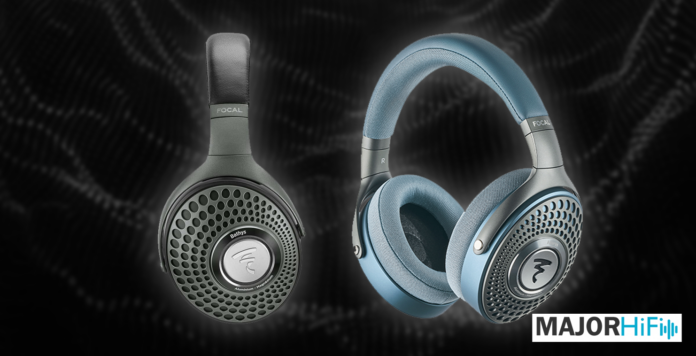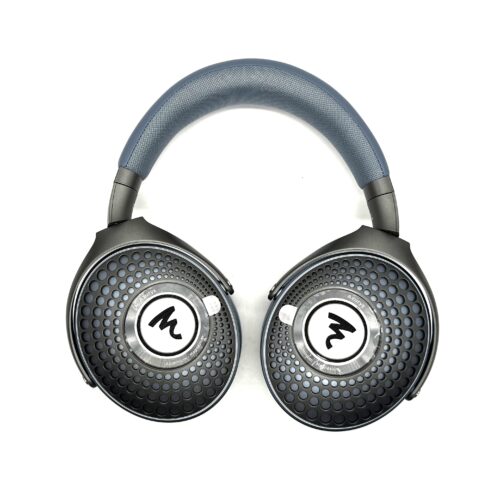Focal’s line of products is robust. They’ve got something for just about everyone, especially since they added mid-fi offerings like the Hadenys ($699) and Azurys ($549) this year. In our review of the Azurys, we noted its design giving the appearance of a more lifestyle-oriented headphone. Its looks, size, and weight make it portable and stylish. So it’s natural to wonder how it stacks up with its bluetooth counterpart, the Bathys ($699). Both are closed back headphones with similar designs, and being at similar price points, it can be tough to choose between the two. That’s why we’re here to break down all the differences and help you decide which are the best Focal headphones for audiophiles like you. So let’s get right into it.
What’s in the Box:
| Azurys | Bathys |
|
|
Focal Azurys vs. Bathys: Build Quality
The Bathys represents a build footprint that Focal seems to have followed into its design of the Azurys. With two colorway options, Silver or Dune, it goes for a more mature look, prioritizing neutral tones. Its honeycomb-like earcups will remind you of other Focal headphones, and for the most part the Bathys does a good job fitting into the overall look and feel of Focal’s overall product line. Its headband and ear cups are adorned in leather and there’s definitely a luxurious feel to the headphones. That said, they’re still quite durable, and feel really nice on the head due to the lightweight design the Bathys incorporates. At 350 grams, it sits nice and cozy on the head with appropriate clamping force.
I’ll also just stop to note that one key difference between the Azurys and Bathys is that the Bathys has a series of buttons. Naturally, as a wireless headset, these are for its controls, including pairing, volume control, playback options, and a power switch. Along with those, you’ll have the in-built microphone. Notably though, the Azurys does offer playback controls and an in-line mic with its cable, so these aren’t features you’d lose in choosing the passive, wired headphones.
The Azurys follows similar design cues as the Bathys, though it has some very key differences. Most eye-catching is the colorway. The Azurys comes only in a striking blue finish. Still, Focal has restrained the look by muting the brightness of the lighter toned blue, as it references the azurite stone for inspiration. Its other key distinguishing feature is its choice of textile, memory foam ear pads, which are lighter, and slightly more comfortable than the leather on the Bathys. The Azurys is also marginally lighter than the Bathys at 306 grams.
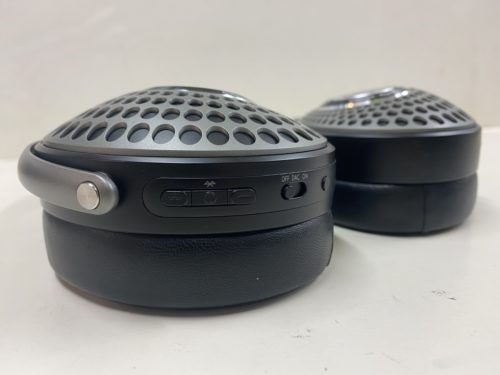
Design and Features of Focal Azurys and Bathys
Both the Azurys and Bathys use Focal’s proprietary 40mm aluminum/magnesium “M” dome drivers. So as far as the sound technology goes, these headphones are about on par with each other. Where they become quite different is in the feature sets they offer, due to one being wired and the other being wireless. As far as drivability goes, the Azurys doesn’t take much power at all. With a 26 ohm impedance and 100dB SPL, you can run this headphone off of just about anything, which adds to its portability. That said, it can scale in sound quality when utilizing a higher quality DAC/amp, which is a benefit to the wired set up as opposed to wireless.
But the Bathys is a powerhouse in its own right as a wireless headphone. Using Bluetooth 5.1, it is compatible with codecs which include SBC, AAC, aptX, and aptX Adaptive. It has noise cancelling capabilities (which work well and feels natural), as well as a passthrough mode. Interestingly, although you can listen wired, you can not listen passively. It also can function as an independent DAC, meaning it can receive a signal over Bluetooth, decode it, and send it out to another device using USB-C.
In DAC mode, you can get 42 hours of battery life. For playback, you get 30 hours with Bluetooth, and 35 hours wired. It does support fast charging, offering 5 hours of charge for just 15 minutes plugged in. To charge it to full battery, you’ll only need to wait an hour and a half. You can also control features like EQ through its companion app.
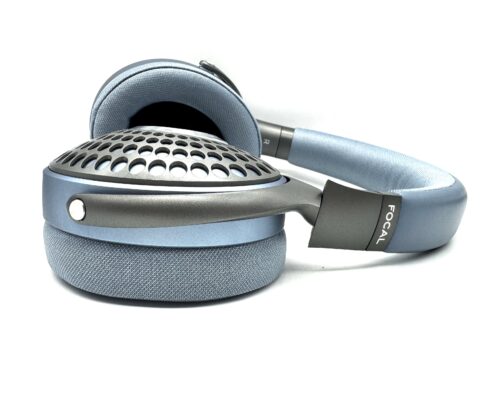
Sound Comparison: Azurys vs. Bathys
So now that we’ve discussed the inherent differences between these devices, let’s see how they stack up with each other in terms of sound. Given that they’re based on the same drivers, they do sound similar. But there are differences because of the interference of the Bathys’ built-in DAC, Bluetooth, and noise cancelling features, and the Azurys which are wired headphones with premium sound. So let’s dig in.
Low End:
The low end is where things are most similar. Both headphones have a dynamic and rich sounding bass. I was impressed with the Bathys’s ability to handle low end textures considering the lossy nature of Bluetooth. But I didn’t hear any sort of notable impact on the bass response. That said there was more of a sense of separation and space on the Azurys, due to its less processed sound.
As far as portable headphones go, they’re both quite good. I think what sets each one apart is that the bass on the Azurys has the potential to scale to higher quality with your source selection, while with the Bathys, you get what you get. As a headphone you’ll take on the go, the bass is fun and engaging on both, perfect for getting distracted from your commute and getting lost in the music. Of course, a noise-cancelling headphone will be best for this use case as it will limit outside noise, but as we’ll touch on in the midrange, that comes at a cost.
Midrange:
The midrange of the Azurys felt a little more natural to me than that of the Bathys. Don’t get me wrong, the Bathys is lightyears ahead of many lower-tier wireless headphones in terms of midrange clarity, and that is impressive on its own. But the Azurys just has more life and expression to it than the Bathys, which sounds a bit drier in comparison. I will note that the Azurys handles busier passages with less grace than the Bathys. The Bathys probably has the edge there due to the optimization of its built-in DAC.
But like with the bass, there is a great sense of musicality in both. I find both to be very engaging, and with strengths on each side, I’d say the midrange is a bit of a tossup.
Top End:
The top end is, once again, quite similar on each headphone. Both have good extension and a nice sense of sparkle up top. Again, I sense a bit of a dryness from the Bathys that isn’t apparent on the Azurys. But the Azurys once again struggles at times with busier passages. I will note that the Bathys does have a better sense of space up top, and we’ll dive deeper on that in the next section. Once again, I think the optimized DAC is the reason for this advantage, though the Azurys can scale in quality with better DAC/amps.
Soundstage:
Like I said, there is a somewhat better sense of space on the Bathys, and to an extent, I find its soundstage to be wider than that of the Azurys. But the Azurys is no slouch, with an advantage in actual imaging and sound localization. And don’t forget that caveat: the Azurys scales with source and amplification. Overall I think you can’t lose with either, but if you prefer more accuracy in your soundstage it’s the Azurys. If you prioritize sheer width, then maybe the Bathys is more your speed.
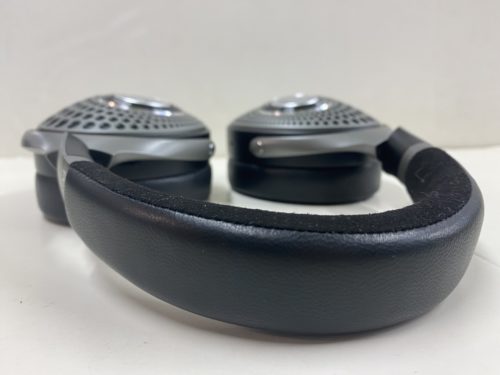
Which Focal Headphone is Best for You?
So which headphone is right for you? Well first and foremost, if you need the convenience of wireless technology, the Bathys is the obvious answer. And likewise, if you’re opposed to the interference of Bluetooth and noise cancelling and prefer to stick with a wired headphone, than the Azurys will be more your speed.
As far as sound goes, it’s a close call. The Bathys has the Azurys beat in terms of as-is sound quality in my opinion, but the Azurys is able to scale to impressive heights with a good source. The problem here is that once you add in a DAC/amp dongle or system, you’re increasing that competitive price total, which makes the Bathys seem like an even better value. And of course if you employ a source setup, you’ll be limiting the portability of the headphone as well, which is a pro for some and a con for others.
Ultimately, it comes down to your use case and overall budget. Unfortunately, I couldn’t find a clear winner. They’re both extremely competitive but unique products, and for all they have in common, they both offer special features that make them their own.
The Focal Azurys and Bathys are available at Audio46.
MAJORHIFI may receive commissions from retail offers.


